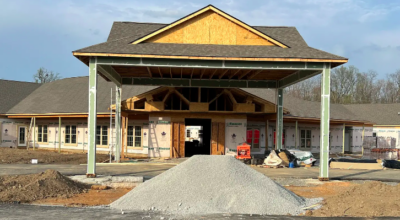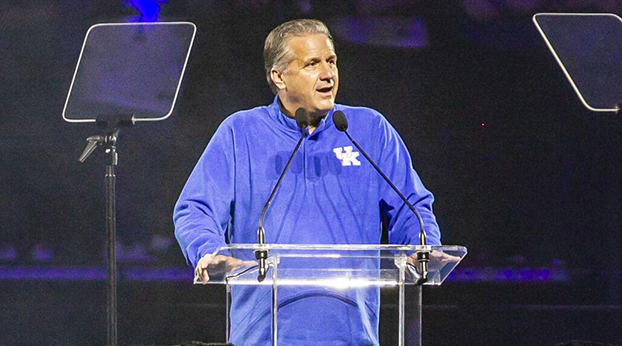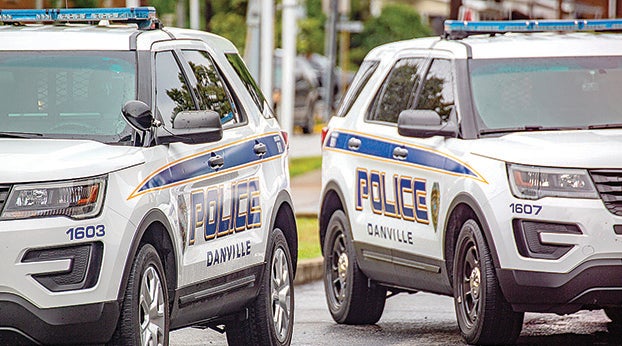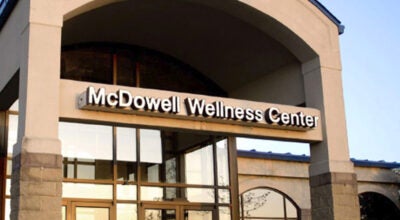‘You don’t really believe you’re going to get sick.’ – Local COVID survivors share their story
Published 10:49 pm Friday, May 1, 2020
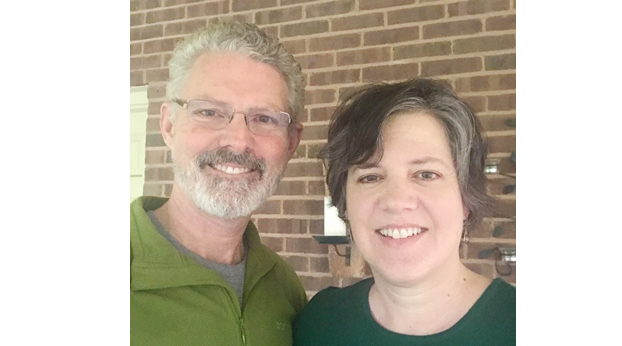
- Rick and Mary Rudd both suffered from COVID-19. They have since recovered.
A local couple is recovering after they each suffered through their own case of the novel coronavirus, also known as COVID-19.
Rick and Mary Rudd took a trip to California in March, and while they were gone, the situation with the virus in the United States began to worsen. They quickly made a decision to get back to Danville.
“It became evident that we needed to cut our trip short, come home and begin making preparations to shelter in place, so we did that,” Mary said. “And because we had traveled, we knew that we needed to pretty much self quarantine. We only made a few essential errands to get groceries and things like that, but otherwise we stayed in. You do that out of caution and just wanting to follow the best advice that is available. You don’t really believe you’re going to get sick.”
After getting back home, Rick said he began experiencing a cough and then developed a fever on March 25. The next day, which was a Thursday, he was tested for COVID-19. By the weekend, things had become much worse.
“I had a really dry, irritable, persistent cough and fever, and I even passed out once. Mary was having slight symptoms at that time, so she was able to take care of me, but then she started getting sick. It just depended on who felt sicker there for a few days as to who got help and who had to help the other,” Rick said.
Mary was busy caring for Rick, but it wasn’t long before she was much sicker.
“On about the fourth or fifth day of his illness I began to feel fever and body aches,” she said. “It took three or four days for me to realize this was going to be more serious for me. My sickness lasted longer and it was more severe.”
As Rick began to see improvement, Mary’s illness worsened. She said she has experienced the flu twice, and at first she saw a similarity, but as COVID-19 wore on, there was no comparison.
“The fever and body aches, that part of it felt familiar. That part feels flu-like at first. But I began to feel nauseous, and I had many days of headaches and dizziness.”
The headaches were not normal headaches, but migraines, and worse than the ones she had experienced before. She said she can usually deal with a typical headache without medication, but in this case she had to take Tylenol.
“I had no choice,” she said.
Mary described the virus as having a feeling of something trying to attack her nervous system. She said she heard loud ringing in her ears, along with a lot of additional “background noise” that accompanied the dizziness, headaches, coughing and fever, which were all happening at that same time at the worst part of her illness.
“I had a fever for 15 consecutive days, and I had a lot of symptoms to deal with at one time. It is definitely the most difficult sickness I’ve ever had,” she added.
Mary may not have known it at the time, but Rick says health department officials were very concerned about her.
“Even the health department people were calling and saying, ‘You know, you’re one of the two people we’re really trying to watch. We’re kind of worried about you.’ After she got better, they told us, ‘Wow, we were really worried about you.’ I was pretty afraid of what might happen with her because I knew she was pretty sick, and I knew how fast this thing could deteriorate just because of how I felt, so I was a little on edge with her,” Rick explained.
Neither was hospitalized, but it was a fear that came to mind early on.
“I did have a fear that I would have to go to the hospital. In fact when I passed out, Mary was ready to call the hospital and I talked her out of it. We called my doctor and he thought it was just low fluids and my blood pressure had gone down. It happened when I got out of bed, so he (the doctor) just thought it was probably an equilibrium kind of thing, and it turned out he was right,” Rick said. “This virus is so unpredictable, and you can feel like you’re OK one hour, and the next hour you feel really sick. You can take a drastic turn for the better or the worse very quickly. It really incapacitates. We’re both in our mid 50s, but we’re both healthy, active people who work out and eat healthy and try to maintain a healthy lifestyle, but it truly knocked us to our knees.”
Dr. Rick Hempel, a local family physician who is also certified in geriatrics, is the primary care physician for the Rudds. He said as they were tested and diagnosed with COVID-19, he wanted to be sure to watch for certain signs that were particularly dangerous with the disease.
“The thing I thought we needed to be careful about was shortness of breath. If you start having shortness of breath with COVID-19, that suggests you may be developing pneumonia and some of the respiratory complications that go along with it,” Hempel said. “Neither Rick nor Mary had significant shortness of breath. They had a cough and they felt horrible, and it was more like a flu illness for them, maybe like a flu on steroids, a little worse, but the good news was at no point along the way did it really appear that they had pneumonia or respiratory failure or any of the really bad things. Now we’re starting to learn that there’s a risk of stroke, heart attacks are more common. There’s really a lot of complexity to this disease compared to other illnesses we have treated that are viral.”
Hempel said he was talking to the Rudds every couple of days. Both were showing evidence of improving, and neither had significant shortness of breath. He said a secondary infection was a concern, and he was very close to doing some additional diagnostic testing to be certain they did not have an infection such as a bacterial pneumonia on top of the COVID-19.
“One of my big things was trying to avoid them exposing other people, and I obviously didn’t want to expose myself to it unless we had to. Luckily they were able to stay home pretty much the whole time and did remarkably well,” he said. “We did have them come by the office and do a drive-by test, which I think is a good way to do it so you really don’t get out of the car. And there’s lots of places doing that across the state now.”
Hempel said approximately 80% to 90% of people who experience COVID-19 have mild to moderate disease, and that’s where the Rudds’ illness would be categorized.
“They wouldn’t call it mild because they felt horrible, but when people get sick with this, they get really sick,” he added.
Getting through the disease was not easy, and the Rudds obviously depended upon each other as their health improved, but Mary said friends and neighbors were also key to helping them through the process.
“When you’re in the middle of something that unpredictable and unfamiliar, we were just busy dealing with it. It was intense, and it was also very humbling and touching to have so many people checking on us and really going out of their way to bring us what we needed,” she said. “You have people do nice things for you in life, but we had never been in a situation like this, in which we really had to have that assistance, and our friends and neighbors were there.”
She said when it became clear that they both had the disease, their thermometer stopped working. One friend went to three different stores to find one, with no success.
“Another friend brought us his thermometer and gave it to us. At a time when people really weren’t wanting to get out, they were doing these things for us,” she said.
Beyond COVID-19
During their illnesses, Rick said he and Mary became avid followers of Kentucky Gov. Andy Beshear’s daily updates.
“I’m not as regular on it now as I was the first few weeks. I get daily updates from The New York Times for the national scene, but it seems like on the national level, the policy bounces all over the place and you never know what’s coming next,” he said. “But I think from the state level, it’s been a fairly consistent message, and that’s been helpful, too.”
With talk of the economy moving forward Rick said he feels it is important for people to continue to use caution and not try to get “back to normal” too quickly.
“I think we absolutely have to be very careful about opening the economy. I’m glad to see that the healthcare institutions are starting to open back up as we haven’t seen a rush on the hospitals like we were afraid we might. But as far as businesses, I think we have to take precautions with the social distancing, and the wearing of masks is a great idea.”
Hempel agreed, but added that the public might have a misconception about the purposes and efficacy of masks.
“I think we should follow the public health recommendations, and that is a recommendation. The most important thing is social distancing, and unfortunately things like avoiding big groups, starting school back and going to ball games and all that, which we all want to do, I think that’s the greatest risk. I think masks help reduce the risks a little bit, but the way masks work is not the way the public in general seems to understand it,” Hempel explained. “The primary benefit of wearing a mask is if you are shedding the virus, you’re less likely to spread it to other people if you’re wearing a mask. It’s really not so much that if you’re wearing a mask it’s going to prevent you from getting the virus from other people.”
Transmitting the virus is not difficult, and Hempel added that it is believed to be mainly droplet transmission.
“If somebody’s shedding the virus and there’s droplets and they contaminate surfaces, or if the virus is in high concentration on their face and on their hands, if they were to touch you or you were to touch them, or you were to touch a surface they had just recently touched, then you’ll get it on your hands, and then people touch their face naturally. You’ll touch it to your face and get it in your eyes or in your mouth and then you get infected,” he explained. “The other thing is it can be aerosolized. That’s a little different type of transmission from droplets. That’s where it’s a very fine mist that can be transmitted around, and we don’t really feel like most masks, unless you’re wearing an N95 mask or higher, that most masks are able to prevent that type of transmission. So the big thing is, we all wear masks to be responsible because we don’t want to transmit it if we’re one of those asymptomatic folks who has the virus.”
Hempel said a recent study in New York City of 5,000 people who were hospitalized showed that 14% had to be placed in the ICU. Of those in the ICU, there was a mortality rate of 20%, and of those who had to be on a ventilator the mortality rate was 89%.
Numbers across Kentucky have varied from county to county, and Hempel said locally, things could be much worse. The Rudds are the only patients he personally has treated who have tested positive for COVID-19.
“You have to remember, we’ve had 17 people in Boyle County, and only 11 or so in Mercer, so really there’s just not a lot of this virus that we know of that’s floating around in our community. And I believe we probably do not have much, because if we had a bunch of asymptomatic people that were walking around with it, then we’d likely have some sick elderly people that were having to be hospitalized. We’ve only had maybe two total people at Ephraim McDowell that have had the virus and had to be hospitalized, so that’s such a small number,” Hempel said, referencing places such as Louisville and Madisonville that have had significantly higher numbers of cases. “I feel like we’re been relatively spared in our area, and thankfully the Rudds were smart enough to stay home as soon as they got back. If they had gone out in the community for a few days as they were just starting to get sick, we would have probably had an outbreak, so I think they did a major service by immediately quarantining themselves when they got home.”
Rick said he and Mary recently spoke with Hempel and both agree if their illness can help others, they are willing to do what they can to help.
“(Hempel) now has an antibody test that he trusts to be fairly accurate, and he said when that comes back you’ll know if you’ve got an antibody to it, you’re pretty sure you won’t get it (again),” Rick explained. “He said as bad as we both had gotten the disease, he can’t imagine us not having some immunity, at least for several years if not for the rest of our lives. I’m hopeful that we do have that, and I’ll be eager to donate blood or plasma in order to help somebody else if I’m able to. I know how bad this is, and if I can prevent somebody from getting it or help somebody who already has it, I’m all about that.”
Personal reflections
COVID-19 has been a learning experience for the Rudds, and although there is no shame in having the disease, Rick said at first, he kept the news to himself.
“I told my boss at first, then I shared it with the rest of the group (at work) on our conference call last Monday because they were talking about reporting things, and I just wanted to share with them, as a person who’s been through this…I’ve heard people that are saying they’re not afraid of it because healthy people will get over it. While that’s true most of the time, it’s not pleasant and it’s not easy, and it’s not even a sure thing. I just wanted to share with my co-workers; you want to make sure you take care not to get this because it’s nasty.”
Mary said she has developed more compassion since having the disease, and it has “kind of softened the edges” for her.
“I came out of it feeling more gentle toward people, even people who have different opinions than I do about the situation we’re in and how we should handle it. I try to remember that everyone has their reasons for their perspective, and that being gentle and measured and mindful of how we talk with one another and how we live each day right now seems to be needed because everybody is under stress,” she said. “No one is escaping the stress of the situation, whether they’re sick or not. But I definitely know now that I’m a COVID-19 survivor, and my battle with it was pretty severe, I know that gives me a certain perspective on it. This illness is causing a lot of suffering on many levels, and if we can come out of this with a little bit more of a pause about what it really feels like to suffer and be aware of the suffering and different ways people suffer, that might actually be a good thing to remember.”


